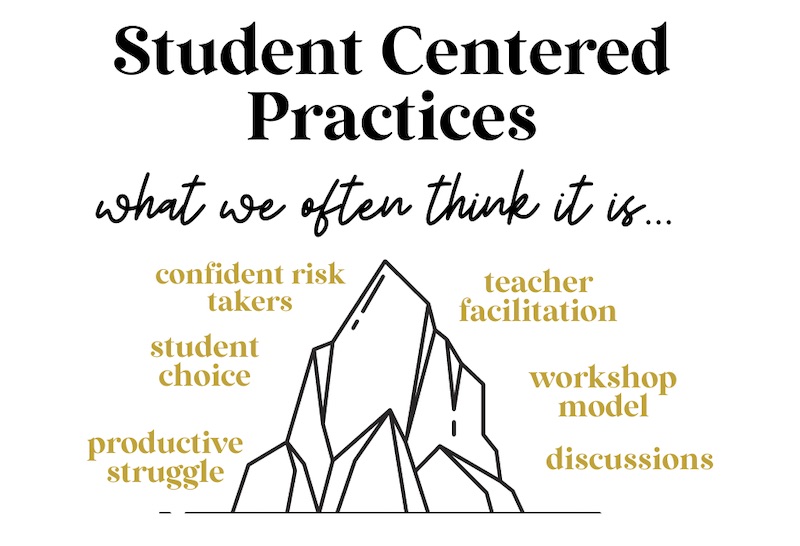4 Ways to Build Equity in Your Math Classroom
You may support the idea of creating an equitable, student-centered classroom, but question your ability to shape instruction so every child is well-served. In this article I’ll share four ways you can start simply by meeting students’ needs and building on their assets.
Every child who walks into my classroom is welcomed into the community. Ours is a math community, co-created where everyone feels safe to take risks and believes they have the power to grow their brain.
That said, the reality is that each child shows up at school from a different situation. Not every child comes in with what they need to be immediately successful – due to a wide variety of reasons.
It’s our job as teachers to create and sustain an equitable classroom community – a place where all children feel ownership and have what they need to successfully learn.
In my own classroom I have found that putting my students’ thinking at the center of my instruction has helped the members of our community deeply understand math.
What are student-centered teaching practices? They’re instructional and planning moves that allow the thinking that students are doing to drive the learning. For example, I use math tasks that promote productive struggle and discussion to create our equitable classroom community of math learners.
Four Ways You Can Start Simply
1. Work on grade level content.
Often we think we have to “fill holes” before we give our students grade level content. However, the opposite is true. In his 2021 Atlantic article Our Kids are Not Broken, educator and author of Leaders of Their Own Learning Ron Berger wrote:
“When students feel empowered, they care more and work harder. Next time you hear the phrase learning loss, think about whether we really want to define our students by their deficits instead of their potential.”
By taking an asset-based approach to instruction in our math classes, we can show our students that they are capable of doing math while simultaneously building their positive math mindset.
I use math tasks that have multiple entry points and various possible extensions, because the strategy attends to each student’s specific needs. Student centered practices allow me to meet my learners’ needs through building on what they know and can do while nudging them toward achieving grade level standards.
Try it: Introduce a student centered instructional practice such as Which One Doesn’t Belong and Problem of the Day. Create a routine to provide a predictable structure to teach students grade level content in a student centered way.
2. Believe all students will meet high expectations
When we believe some students are “remedial” or need to be shown how to understand, then we are lowering our expectations. We are saying to them that we believe they can’t do it without us. This is the opposite from what our students that struggle need. They need to know that we have the confidence in them to meet the expectation.
Thomas Armstrong, author of The Power of the Adolescent Brain and Neurodiversity in the Classroom: Strength-Based Strategies, says, “A strength-based classroom is a place where students with all sorts of labels come together as equals to form a new type of learning environment.” Your classroom community can be a place where all children’s strengths and needs are at the center of the planning, instruction, and assessment.
Try it: Start by showing students you believe they can meet the expectations and support them in doing so. One way to do this is by “launching” the math task. In the launch, tell the story of the problem, then ask students to use their own creativity to retell the problem as a story. This helps students conceptualize the problem and get an idea of how to start solving.
The launch can also serve as a “check for understanding” and help you identify who needs support during solving.
3. Plan strong instruction where students do most of the thinking
When we ask them to attempt to solve before direct instruction, the cognitive load is put on our students, where it belongs. This is called productive struggle. When students are given the time to productively struggle, they are able to make meaning and build their self efficacy.
In Taking Action: Implementing Effective Mathematics Teaching Practices in Grades 6-8 (NCTM, 2017), the authors describe productive struggle as a equitable practice:
“From an equity perspective, this implies that each and every student must have the opportunity to struggle with challenging mathematics and to receive support that encourages their persistence without removing the challenge.”
We provide an equitable space for students when we give students opportunities to use what they know to build knowledge and strategically teach them how to persist.
After productive struggle students work together with their peers and teacher to share their thinking in math discussions. Learning is consolidated when the teacher strategically selects student thinking to share in the math discussion. With the right questions that are both open ended and non leading, the math discussion is guided by the students’ thinking and drives everyone toward grade level standards.
Try it! Support students with productive struggle by making it routine in your classroom. Resist the urge to swoop in to help. As teachers we have to assess our mindset about this time of student striving. We want to make sure we truly exemplify our beliefs that children are able to learn through productive struggle and collaboration. We can save our explanations and demonstrations for after students explore and discuss the math task.
4. Deep engagement through choice and voice
When students have choice in their work, it fosters ownership and in turn increases engagement. In my classroom, choice looks like this:
- During the launch of a math task everyone has access to the problem, empowering students to solve it now and setting the stage for productive struggle.
- During productive struggle, students explore and tinker to develop their own representations and strategies toward a solution.
- During our math discussion (voice), students share their thinking and reasoning with their peers. This allows the social aspect of both expressing yourself and learning from others, increasing student engagement. The class learns together while also driving toward deep mathematical understanding.
These practices embed student choice, engaging students and building self efficacy. When students find their own ways of solving and figuring out, they build a sense of accomplishment and a mindset of “I can do hard things.”
Try it! Adopt a student centered practice and then start encouraging your students to share. Remind them that it is their thinking and ideas that drive the learning in your classroom. Get curious about their thinking, ask questions and listen closely. Then sit back and watch as they start to feel empowered as the experts in the room!
Leaders of their own learning
Uniting students around a love for math is not easy, but using student centered practices allows students to be the experts in the room. These strategies to integrate student centered practices have helped me create an equitable classroom where every student leads their learning.
As teachers we want to believe that all of our students can achieve. We have to check in with ourselves to ensure that our instruction, actions, and words match our intent. With careful planning and intentional choices each day an equitable classroom emerges.
Student centered practices have truly taken my students from “disengaged” to models of engagement. With these shifts in practice, you can get started simply and finish by creating your own equitable math classroom community.
Mona Iehl (@HelloMonaMath) is a fifth- and sixth-grade math teacher in Chicago, Illinois. Mona started her career 13 years ago teaching in the primary grades but found her home in the middle grades five years ago. Find her other MiddleWeb posts here. Mona recently took her passion for helping teachers and students find their inner mathematician to a podcast. Listen in at @HonestMathChat.


































